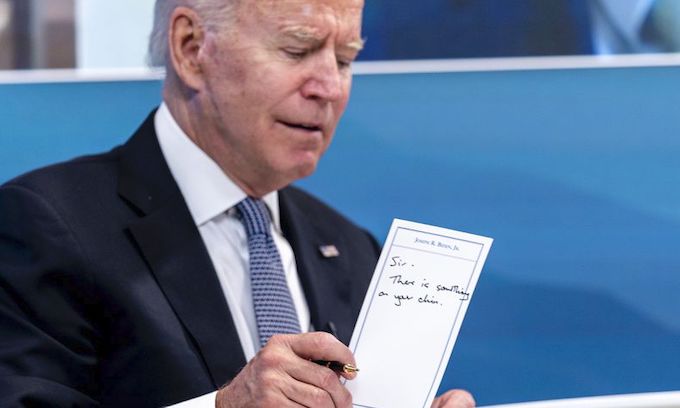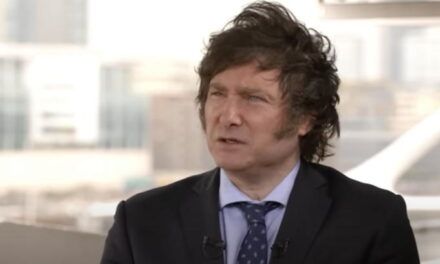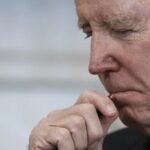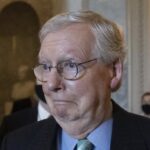The U.S. economy added fewer than 200,000 jobs during the month of September, the Labor Department said in its monthly national employment assessment on Friday — marking the second straight month that the figure was far below expectations.
The department said 194,000 jobs were added for the month, well shy of the 500,000 expected by most economists.
Friday’s report also said the national unemployment rate declined to 4.8% and the number of unemployed persons fell by 710,000 to 7.7 million.
“Both measures are down considerably from their highs at the end of the February-April 2020 recession. However, they remain above their levels prior to the coronavirus pandemic,” the department said in a statement.
“Notable job gains occurred in leisure and hospitality, in professional and business services, in retail trade, and in transportation and warehousing. Employment in public education declined over the month.”
The department’s report was expected to be one of the more pivotal labor snapshots of the COVID-19 era, as it reflects the departure of enhanced federal unemployment benefits and comes at a time when U.S. monetary policymakers are trying to determine the next steps for managing the economy.
Most economists expected the report to show a substantial increase over August, when a disappointing 235,000 were added to U.S. payrolls — about 500,000 fewer than most everyone anticipated.
President Joe Biden said at the time that the report showed the continuing influence of the Delta coronavirus variant in the United States.
Economists surveyed by FactSet and The Wall Street Journal expected that Friday’s report would show 500,000 new jobs in September — and the monthly assessment by ADP and Moody’s Analytics on Wednesday, which is always a precursor to the Labor Department report, showed an addition of 568,000 private sector jobs last month.
Friday’s labor snapshot came one day after the department reported that first-time unemployment claims nationwide last week decreased for the first time in a month.
Biden, who will speak about the jobs report at 11:30 a.m. EDT, emphasized after the August report that the job market was affected by surges in COVID-19 cases during the summer — surges that he and health officials say is largely because of those who refuse to be vaccinated.
The Republican minority on the House ways and means committee said on Thursday that Biden remains about 1.3 million jobs short of his pledge to produce 4.4 million through his $1.9 trillion COVID-19 stimulus package by September.
“So far, only 3.1 million jobs have been created, meaning more than 1.3 million jobs are needed in September’s jobs report to deliver on his promise,” they said in a statement.
The COVID-19 surge in August is believed to have altered the labor participation rate — people who don’t have jobs and aren’t actively looking for work — by pushing people out of food service, retail and hospital jobs where they risk greater exposure to the virus.
“The participation rate has basically stalled at relatively low levels for the past year,” Sal Guatieri, senior economist at BMO Capital Markets, told Quartz. “Some people are just reluctant to get back into the workforce.”
Child care, a key pillar of Biden’s $3.5 trillion social spending plan that has stalled in Congress, has also weighed on job numbers, as it’s limited the participation rate among U.S. women. It was expected that the broad reopenings of schools nationwide last month would increase women’s labor participation rate.
The new jobs report comes as the nation’s expansion of unemployment benefits, which offered a weekly supplement between April 2020 and July 2021, came to an end on Sept. 6 and reduced benefits for more than 8 million people.
Meanwhile, wages have been on the rise, with hourly pay rising 4.3% over the past 12 months ending in August.
Friday’s report was expected to be an influential factor as to whether the central bank will taper its pandemic bond buying program.
As an emergency response to the pandemic, the Federal Reserve bought $120 billion worth of bonds each month and Fed Chairman Jerome Powell has said the central bank will give “advanced notice” before announcing plans to halt the asset purchases.
During the last meeting of the Federal Open Market Committee, Powell said that the Fed could begin to scale back the purchases if payroll numbers improve.
Thursday, Biden defended his decision last month to require all U.S. businesses with 100 or more employees to require that all workers be inoculated, and said the economic recovery depends on Americans getting vaccinated
According to the Centers for Disease Control and Prevention, about 65% of the U.S. population have received at least one dose of the vaccine. About 56%, or 186.6 million Americans, are fully vaccinated. Almost 4% have received a third dose, or a booster.
Copyright 2021 United Press International, Inc. (UPI). Any reproduction, republication, redistribution and/or modification of any UPI content is expressly prohibited without UPI’s prior written consent.
—-
This content is published through a licensing agreement with Acquire Media using its NewsEdge technology.



















I listened to him crow about how great he was/did.. IF THIS IS Greatness, i hate to see what incompetence looks like.
wait until tomorrow… you’ll see
He can blame whatever he wants, the onus is on him alone. Paying people not to work, putting people out of work to appease the greenies, terminating those who refuse to or cannot take the vaccine. Uncoordinated stupidity.
I’d bet the farm the jobs that was created are poverty level income jobs. I’m stunned they are claiming that many jobs… it’s probably about half of what they are lying about. I’m beginning to think President Trump gave up the fight of the election fraud just to show how stupid, ridiculous, insane and just plain evil the policies are of the scum that perpetrated the election fraud. Sometimes the forces of good have to let evil happen just to open the eyes of the gullible and ignorant.
For what purpose?? Letting folks see the evil, is not really doing much to Change things..
You must to have a tangible basis of reality to say …I told you so… Until these ignorant Quid Pro Joe supporters actually feel the pain themselves and it affects their standard of living they’ll…. NEVER… believe the evil being shoved up our keisters. Look at the poles of people who think the country is headed in the wrong direction. 9 months ago when the communist occupiers took over it was at 34%… now its 52%
WILL it change how they vote though??